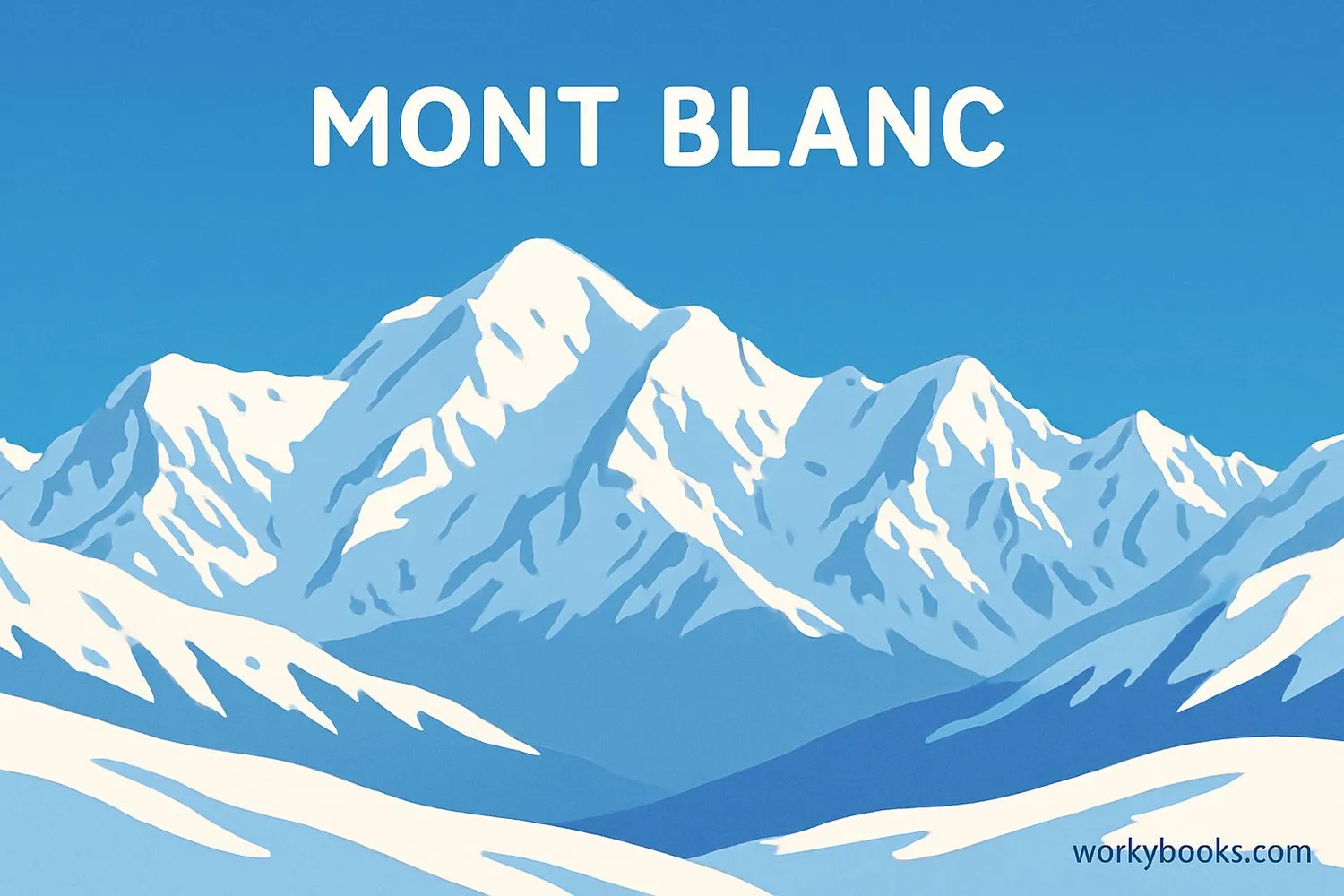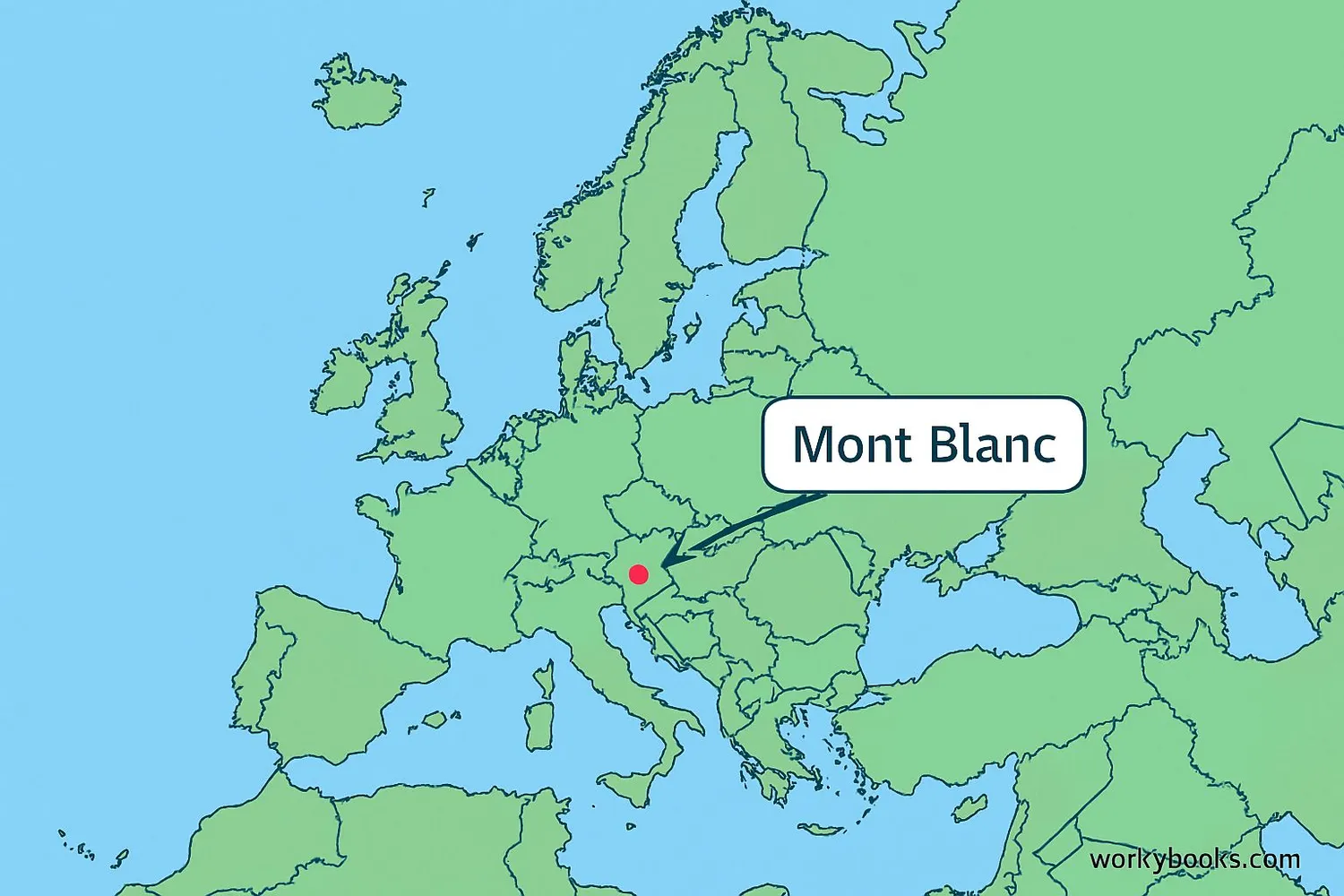Mont Blanc - Definition, Examples, Quiz, FAQ, Trivia
Discover Europe's highest mountain and its fascinating geography!
What is Mont Blanc?

Mont Blanc is the highest mountain in Europe, standing at 4,807 meters (15,774 feet) tall! Its name means "White Mountain" in French because its peak is always covered in snow and ice.
Located in the Alps on the border between France and Italy, Mont Blanc is part of a mountain range that formed over millions of years. The mountain is famous for its beautiful glaciers, challenging climbing routes, and stunning views.
Did You Know?
The first successful climb to Mont Blanc's summit happened in 1786 by Jacques Balmat and Michel Paccard!
Height
4,807 meters (15,774 feet) above sea level
Location
French-Italian border in the Alps
First Ascent
August 8, 1786
Glaciers
11 square miles of glaciers
Geography & Formation

Mont Blanc formed over millions of years through the collision of tectonic plates. The African plate slowly pushed against the Eurasian plate, forcing the land upward to create the Alps mountain range.
The mountain sits in the Graian Alps range, with its summit marking the border between France and Italy. The surrounding area includes:
Glaciers
Mer de Glace is the largest glacier, stretching 7km long
Valleys
Beautiful valleys like Chamonix surround the mountain
Rivers
Glacier melt feeds major European rivers
The climate around Mont Blanc changes dramatically with altitude. While the valleys have green forests and meadows, the higher elevations have permanent snow and ice. The summit experiences Arctic-like conditions with temperatures often below -20°C (-4°F).
Climbing History

Climbing Mont Blanc is a major challenge that requires preparation and skill. The first successful expedition in 1786 marked the beginning of modern mountaineering. Today, about 20,000 climbers attempt the summit each year.
There are several climbing routes to the summit:
Gouter Route
Most popular route, requires crossing dangerous rockfall zones
Three Monts Route
More technical route with glacier travel
Grand Mulets Route
Historic route with beautiful glacier scenery
Climbing Safety
Climbers need special equipment and training to handle altitude, glaciers, and changing weather conditions.
Tourism & Activities

Mont Blanc attracts millions of visitors each year who come to enjoy the stunning mountain scenery and outdoor activities. The Chamonix Valley at the base of the mountain is a world-famous destination for:
Skiing
World-class ski resorts with slopes for all levels
Hiking
Hundreds of kilometers of trails with amazing views
Cable Cars
Aiguille du Midi cable car offers breathtaking views
Tourism brings both benefits and challenges to the region. While it supports local economies, it also creates environmental pressures. Conservation efforts focus on protecting the fragile alpine ecosystem from the impacts of large numbers of visitors.
Mont Blanc Quiz
Test your knowledge about Mont Blanc with this quiz!
Frequently Asked Questions
Here are answers to common questions about Mont Blanc:
Mont Blanc Trivia
Discover some amazing facts about Mont Blanc!
Changing Height
Mont Blanc's official height changes every two years! Scientists remeasure it to track snow accumulation and glacial changes.
Mountain Tunnel
The Mont Blanc Tunnel runs 11.6km under the mountain, connecting France and Italy. It's one of the longest road tunnels in the world!
Ice Cave
Inside the Mer de Glace glacier, there's a cave system that's re-carved every year. Visitors can walk through ice tunnels with beautiful sculptures!
Extreme Skiing
The "Vallée Blanche" ski run from Mont Blanc is one of the world's longest off-piste routes, descending 2,800m over 20km!


